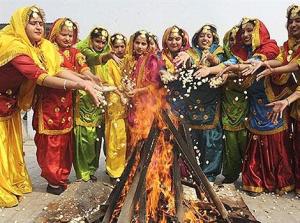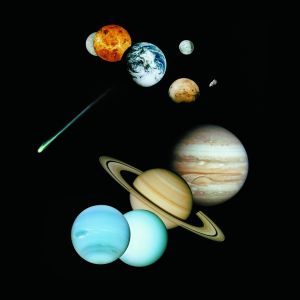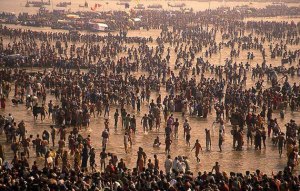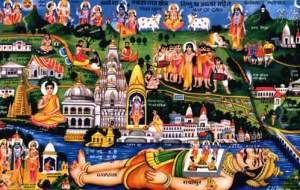Makar Sankranti is one of the most auspicious occasions for the Hindus, and is celebrated in almost all parts of India with different customs and names; but with the same spirit everywhere.
Makar Sankranti as a Harvest FestivalMakar Sankranti is a major harvest festival celebrated in various parts of India. According to the lunar calendar, when the sun moves from the Tropic of Capricorn to the Tropic of Cancer or from
Dakshinayana to
Uttarayana, in the month of
Pausha in mid-January, it commemorates the beginning of the harvest season and cessation of the northeast monsoon in South India. The movement of the Sun from one zodiac sign into another is called
Sankranti and as the Sun moves into the Capricorn zodiac known as Makar in Hindi, this occasion is named as
Makar Sankranti in the Indian context.
The festival of Makar Sankranti is highly regarded by the Hindus from North to down South. The day is known by various names and a variety of traditions are witnessed as one explores the festival in different states.
Astrological Significance of Makar Sankranti
Makar means Capricorn and
Sankranti stands for transition. There is a
sankranti every month when the sun passes from one sign of the zodiac to the next. There are twelve signs of the zodiac, and thus there are twelve sankranti's as well. Each of these sankranti's has its own relative importance but two of these are more important - the
Mesh (Aries) Sankranti and the most important, the
Makar (Capricorn) Sankranti. Transition of the Sun from Sagittarius to Capricorn, during the winter solstice in the northern hemisphere is known as
Makar Sankranti. From this day begins the six-month long
Uttarayana, considered very auspicious for attaining higher worlds hereafter.
While the traditional Indian Calendar is basically based on lunar positions, but sankranti is a solar event, so while dates of all festivals keep changing, the English calendar date of Makar Sankranti is always same,
14th January. Makar Sankranti is celebrated in the Hindu Calendar month of Magha. There is another significance of this day, after this day the days start becoming longer & warmer, and thus the chill of winter in on decline.
Mythological Legends associated with Makar Sankranti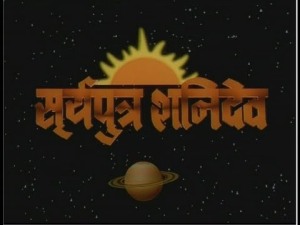
1. The Puranas say that on this day Sun visits the house of his son Shani, who is the swami of Makar Rashi. These father & son do not ordinarily get along nicely, but inspite of any difference between each other Lord Sun makes it a point to meet each other on this day. Father in fact himself comes to his son’s house, for a month. This day symbolized the importance of special relationship of father & son. It is the son who has the responsibility to carry forward his fathers dream and the continuity of the family.
2. From Uttarayana starts the ‘day’ of Devatas, while Dakshinayana is said to be the ‘night’ of devatas, so most of the auspicious things are done during this time. Uttarayana is also called as Devayana, and the next half is called Pitrayana.
3. It was on this day when Lord Vishnu ended the ever increasing terrorism of the Asuras by finishing them off and burying their heads under the Mandar Parvat. So this occasion also represents the end of negativities and beginning of an era of righteous living.
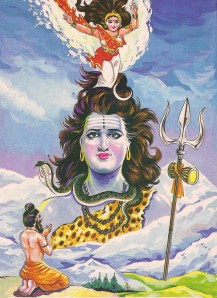
4. The great savior of his ancestors,
Maharaj Bhagirath, did great Tapasya to bring Ganga down on the earth for the redemption of 60,000 sons of Maharaj Sagar, who were burnt to ashes at the Kapil Muni Ashram, near the present day Ganga Sagar. It was on this day that Bhagirath finally did tarpan with the Ganges water for his unfortunate ancestors and thereby liberated them from the curse. After visiting the Patala for the redemption of the curse of Bhagirath’s ancestors Gangaji finally merged in the Sagar. Even today a very big
Ganga Sagar Mela is organized every year on this day at the confluence of River Ganges and the Bay of Bengal. Lakhs take dip in the water and do
tarpan for their ancestors.
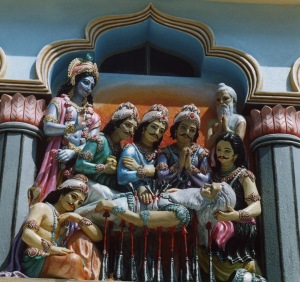
5. Another well-known reference of this day came when the great grandsire of Mahabharata fame,
Bhishma, declared his intent to leave his mortal coil on this day. He had the boon of Ichha-Mrityu from his father, so he kept lying on the bed of arrows till this day and then left his mortal coil on Makar Sankranti day. It is believed that the person, who dies during the period of Uttarayana, becomes free from transmigration.
Makar Sankranti is the day when the glorious Sun-God begins its ascendancy and entry into the Northern Hemisphere and thus it signifies an event wherein the Sun-God seems to remind their children that
'Tamaso Ma Jyotir Gamaya'- may you go higher & higher, to more & more Light and never to Darkness.
To Hindus, the Sun stands for knowledge, spiritual light and wisdom. Makar Sankranti signifies that we should turn away from the darkness of delusion in which we live, and begin to enjoy a new life with bright light within us to shine brighter and brighter. We should gradually begin to grow in purity, wisdom and knowledge, even as the Sun does from the day of Makar Sankranti.
Wishing all of you a Happy Makar Sankranti :)
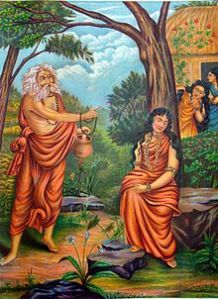 Durvasa cursing Shakuntala[/caption]
Durvasa cursing Shakuntala[/caption]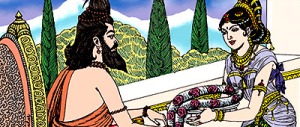 Vidyadhari giving the garland to Durvasa[/caption]
Vidyadhari giving the garland to Durvasa[/caption] Indra riding on Airavata[/caption]
Indra riding on Airavata[/caption]


